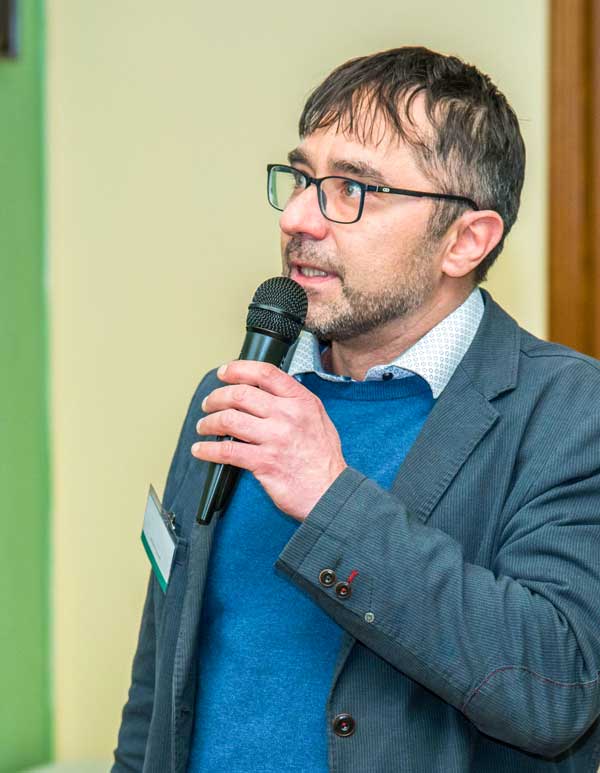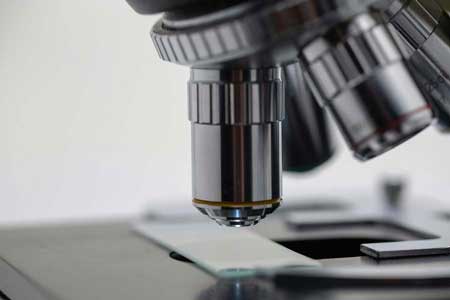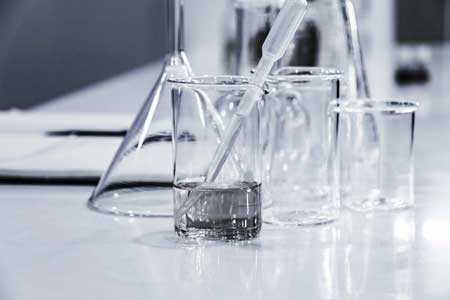Professional activities
Lectures and development projects

Professional lectures
Molecular Microbiological Diagnostics "Experience from Abroad" - The World of the Laboratories around Us Is Diverse and Has Its Specifics … Though Maybe different from What You Would Expect
We are surrounded by moral standards of Christian culture, which we tend to consider to be right. However, the world around us is infinitely varied. This may be the reason why sometimes it is difficult for us to assess the standards of other cultures from a diagnostic point of view rationally and without judgment. Many of us realize that we are part of a very rich Western Europe with the highest level of healthcare in the world. And many of us may also believe the idea that much of the world's population is below this level. But is that true?
The World after the Discovery of Genetic Information - Science after Mendel
Clinical Practice in the Shadow of Technology … Many Questions and Few Answers
We are living in an age of "information" paradise. We have more and more scientific data, used diagnostic methods are becoming more and more accurate, molecular detection is becoming more and more sensitive …
At first glance, it is logical that we view all the benefits of advanced and constantly improving molecular biology technologies as a clear positive and it will probably remain so in the future.
But don’t we often forget that molecular biology and genetics is only a tool to look for answers leading to a correct diagnosis? Do today's cutting-edge technologies really provide simple answers leading to rapid patient treatment? Are we really using the full potential of these methods?
How, in fact, is our clinical interpretative knowledge related to the large volume and high quality of the data obtained?
Let us immerse ourselves together in the real world, which sometimes brings more questions than answers and where the only way to find answers will probably always be discussion …
Standardization and Validation in Routine Molecular Microbiological Diagnostics - Statistics in Clinical Practice
Validation and Verification of Molecular Biological Methods in the Analysis of the Human and Extrahuman Genome - Finding a Rational Consensus instead of Playing with Numbers
With the expansion of any methodology in clinical laboratory practice, there is an effort to validate and characterize it accurately. In certain fields methodologies and approaches to method validation have already achieved the required standardization and the resulting sets of validated parameters are determined in accordance with precise methodologies and procedures.
A typical example of quality validation in a field overlapping with biology and medical practice is a set of standardized biochemical diagnostic methods. In this field, individual parameters and procedures for their validation are already precisely anchored and defined (see for example Metrological Terminology in the Analytical Laboratory, SEKK 2003, International Vocabulary of Basic and General Terms in Metrology, VIM, and others…).
Unfortunately, with only several exceptions, the quality and, above all, the uniformity of procedures and terminology determining the basic parameters of diagnostics in the field of CE IVD diagnostic kits in molecular biology is quite confusing.
For several years, our laboratory has been focusing on the standardization of methods that would allow the producers of commonly used molecular biological methods to generally define at least their basic qualitative and quantitative parameters.
The aim of the presentation is to point out (theoretically and experimentally) the methodological, definitional and interpretive inconsistency of manufacturers of CE IVD diagnostics in determining basic parameters such as determination of detection limit (LOD), linear measurement range and limit of quantification (LOQ) and to initiate discussion among the professional public. In future, this could bring unification of validation methods among the producers of PCR kits and thus significantly facilitate the decision-making process concerning the choice of diagnostics in clinical laboratories.
Sensitive and Accurate Diagnostics in Molecular Microbiology - How Not To Lose the Battle againstPpathogen Variability
We live at times when molecular microbiology is gaining ground in the area of rapid, accurate and reliable diagnosis of serious viral and bacterial diseases.
As was the case during the massive expansion of classical microbiology, we quickly acquired knowledge and learned to use the molecular biological methodologies. And like then, we have begun to rely on the results of these methods almost dogmatically.
We live at a time when molecular microbiological methods provide us with fast, very accurate, yet sometimes completely misleading results!
A typical recent example is the false-negative results of the detection of Chlamydia trachomatis and Neisseria gonorrhoeae mutants in Sweden and the still widely discussed ability to detect rapidly evolving variants of HIV (especially its CRF forms). Let us discuss how to preserve the accuracy and speed of molecular microbiological methods, while staying cautious and paying attention to the feedback on every single result these methods can give us.
Use of Probit Analyses to Determine a Safe Procedure for Sensitive Detection When Mixing Samples.
In the last decade, there has been a massive development of technologies in microbiological and genetic diagnostics using the methods of molecular biology and genetic engineering.
After bridging a relatively long period of development of these methods by their primary optimization, characterization, and transfer to the state of routine use, the necessary conditions for their use in practice were determined. To determine such conditions, the basic parameters of these methods were subsequently defined (in molecular microbiology) similar to, for example, biochemistry. For instance, accurate characterization of the sensitivity and accuracy of measurements became a priority. Today, relatively standardized statistical models are used to determine these indicators, but they often lack a thorough interpretation of the achieved results, which reduces their practical applicability.
A typical example is the use of the statistical model of Probit analysis, which is nowadays commonly used to determine the sensitivity of measurements using real-time PCR methods. As this is a probabilistic model, in practice it is often difficult to determine the real sensitivity of the method in routine operation. In addition, any further work with the data determining the sensitivity is again burdened by the above mentioned evaluation based on probability.
As we were aware of theissues with data interpretation, we created a theoretical model based on the results of Probit analysis in our laboratory to calculate the safe detection of low (defined) levels of pathogens, assuming mixing of samples. We then experimentally verified the practical use of this model on a defined number of samples.
The work was carried out with the support of the following subsidy programs:
- MIT CR No. FI-IM5 / 042
- MPO FR-TI1 / 391
How to Investigate Well with a Quality Kit? - Critical Prerequisites for Achieving Quality Results
Aspects of the Use of External Quality Control Panels for the Validation of Routine Laboratory Methods in Molecular Microbiology.
In recent years, there has been a significant increase in use of molecular biology techniques for detection of clinically significant microbial and viral diseases. Molecular biological detection based on quantitative real-time PCR has become the gold standard in microbiological laboratories all over the world, especially for determination of certain pathogens.
The great development of these techniques on the one hand and the need to standardize and accredit all tests used in routine laboratories on the other hand results in the need to accurately validate technical parameters of established PCR methods (sensitivity of detection, specificity of detection, accuracy of pathogen quantification …) and verify the parameters validated in this way using independent external quality control panels (Instand, QCMD, EHK…).
In our laboratory we have developed and validated a set of methodological procedures (and their specific variants for specific pathogens) monitoring the entire process of processing clinical material from its collection to the interpretation of results. To verify our procedures, we have been using quality control panels (Instand, QCMD) with which we confirmed the correctness of the achieved results.
The work was carried out with the support of the following subsidy programs:
- MIT CR No. FT-TA3 / 098
- MIT CR No. FI-IM5 / 042
Projects

Development of SARS-CoV-2 PCR Detection Kit
In 2020 the company's management asked me to promptly develop PCR detection for SARS-CoV-2, and together with the development team I successfully completed this task. Now the detection is implemented in laboratories worldwide and it is successfully tested in independent external quality assessment panels (QCMD 2020 Coronavirus Outbreak Preparedness EQA Pilot Study).

Technology Research Sensitive and Quantitative Detection of Human Immunodeficient Virus HIV and Optimization of the Applied Diagnostic Process Using This Technology
The research project focused on methodological optimization of the reverse transcription polymerase chain reaction (RT-PCR) technology used to detect a significant human pathogenic virus HIV, which causes the serious AIDS disease. The research on this technology was focused on finding its optimal clinical use and correct interpretation of the results, both technically and in terms of clinical use, allowing its effective integration into the clinical process so that it becomes a useful tool for patient care. Acquired knowledge about the technological production process, the product quality control and technical parameters of the product have been used in industrial production of quality and competitive RT-PCR diagnostic kit.

Research of the Technology for Sensitive and Quantitative Detection of Human Pathogens - HCV and HBV Viruses - and the Optimization of Appropriate Diagnostic process
The aim of the project was the research and optimization of technology for detection of two pathogens, HCV and HBV, by means of polymerase chain reaction (PCR). These viruses cause hepatitis, one of the most serious human diseases with cancerogenic potential. The research of the production technologies and optimal clinical use, as well as its interpretation, will allow more efficient incorporation of the method in the diagnostic schedule. The diagnostic kits as industrial products will therefore be useful and helpful parts of the diagnostic process and will be requested on the market. The knowledge of the technology of industrial production, technological parameters and quality control will subsequently be used in development and industrial production of highly competitive diagnostic kits.